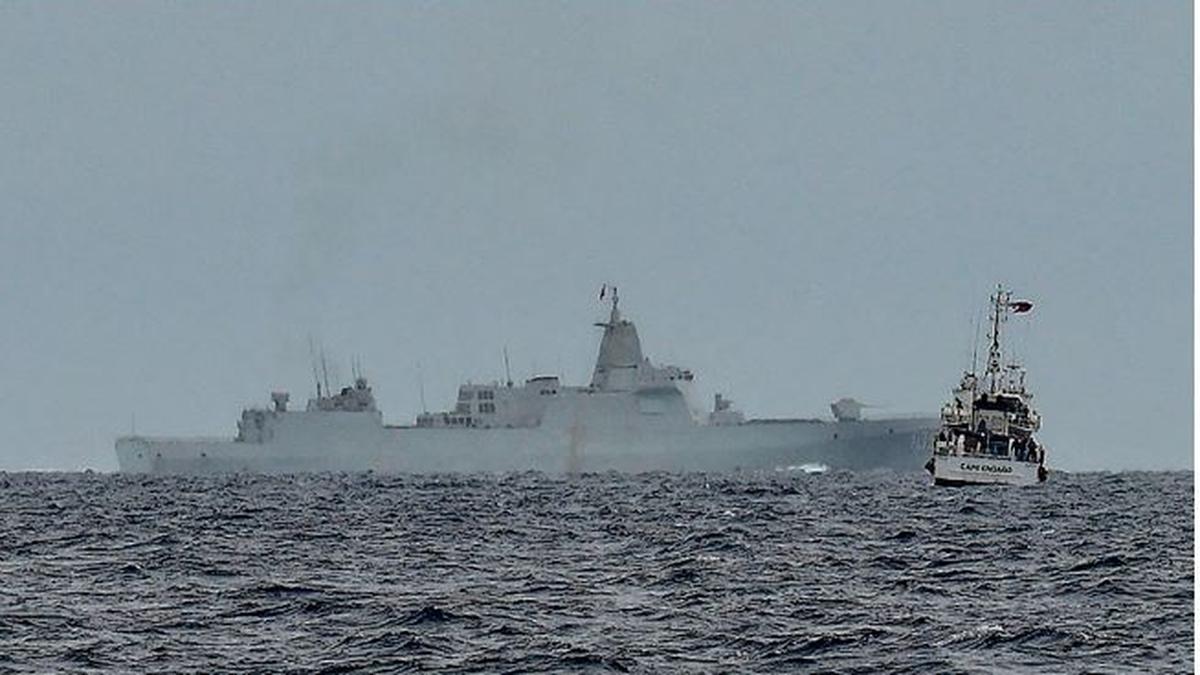China’s assertive actions in the South China Sea, East China Sea, and around Taiwan are part of a broader campaign to exert its dominance in the region. Beijing believes that its strong-arm tactics will wear down its rivals and allow it to secure control of contested territories.
Expanding Influence Through Forceful Tactics
China has been increasingly assertive in its territorial claims, particularly in the South China Sea, East China Sea, and around Taiwan. This assertiveness is fueled by Beijing’s desire to establish its dominance in the region and secure control over key maritime routes.
South China Sea
In the South China Sea, China has been aggressively asserting its claim over most of the waterway, despite an international ruling that its claim has no legal basis. Beijing has built artificial islands with missile systems and runways for fighter jets, deployed vessels that harass other countries’ ships and block fishing activities, and taken control of strategically important reefs and islands. The Philippines, which has been vocal in its opposition to China’s actions, has experienced significant pressure from China in recent months.
East China Sea
China’s assertive actions extend to the East China Sea as well. Beijing has ratcheted up pressure over the Diaoyu Islands, known as the Senkaku in Japan, which are controlled by Japan. In June, four Chinese vessels believed to be armed approached the islands, prompting a protest from Tokyo. In addition, a Chinese military plane flew into Japanese airspace for the first time this week, an incident that Japan labeled a “serious violation” of its sovereignty. Although Beijing claims the incursion near the uninhabited Danjo Islands was unintentional, analysts suspect it was a deliberate attempt to probe Japan’s air defense network and collect electronic intelligence.
Taiwan
China’s pressure campaign has also intensified around Taiwan, which it claims as part of its territory. Beijing has sent increasing numbers of fighter jets, drones, and naval vessels towards the democratic island, employing a strategy aimed at keeping Taiwan on high alert against a possible invasion.
The “Wear Down” Strategy
China’s approach towards its neighbors is a “wear down” strategy. By relentlessly asserting its claims and employing forceful tactics, China aims to tire out its opponents and create an environment where they are less willing to resist its demands.
Psychological Warfare
The goal is to create a psychological impact, to make its neighbors feel that they are constantly being tested and challenged. This pressure can chip away at national confidence and resolve, ultimately weakening their willingness to defend their territories.
Targeting Philippines
In the South China Sea, China’s pressure campaign is particularly directed towards the Philippines. The recent incidents involving Chinese vessels blocking Philippine ships from resupplying their coast guard vessels near Sabina Shoal and the confrontation near the Second Thomas Shoal demonstrate China’s willingness to test Manila’s limits. Beijing is trying to pressure the Philippines into accepting its claim over the disputed territories.
Beyond the Threshold of Aggression
China is pushing the envelope, but it is also careful not to escalate the situation too far. It avoids outright military aggression, aiming to keep the situation just below the threshold of open conflict. The goal is to secure control through assertive diplomacy and military maneuvers, without provoking a full-blown military response.
International Implications
China’s aggressive actions have implications far beyond the immediate areas of contention. The tension between China and its neighbors has broader regional implications, potentially affecting security and economic stability.
Regional Rivalry
The competition between China and its neighbors over contested territories creates an atmosphere of tension and rivalry. This can lead to unintended escalation, raising the risks of conflict and destabilizing the region.
US Involvement
China’s actions are also prompting closer ties between the United States and its regional allies, including the Philippines, Japan, and Taiwan. While the US has a mutual defense treaty with the Philippines, Beijing is wary of US involvement and attempts to create conditions where it can gain the upper hand before any substantial US intervention.
Takeaway Points
China’s campaign of confrontation in the South China Sea, East China Sea, and around Taiwan is a calculated strategy aimed at securing control over contested territories. Beijing’s approach, which combines assertive diplomacy and military maneuvers, is designed to “wear down” its opponents, creating an environment where they are less willing to resist China’s claims. While China carefully avoids outright military aggression, it continues to push the envelope, creating an environment of regional instability. The potential for conflict and the impact on regional security and stability remain significant.









